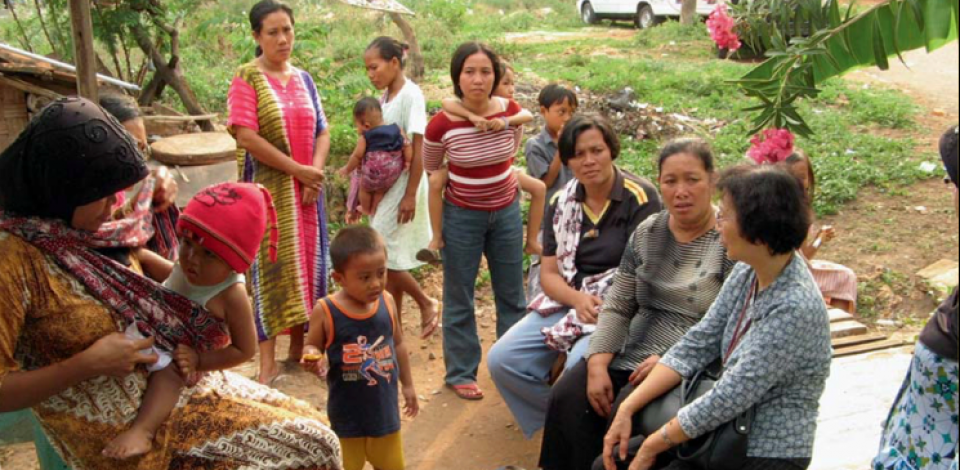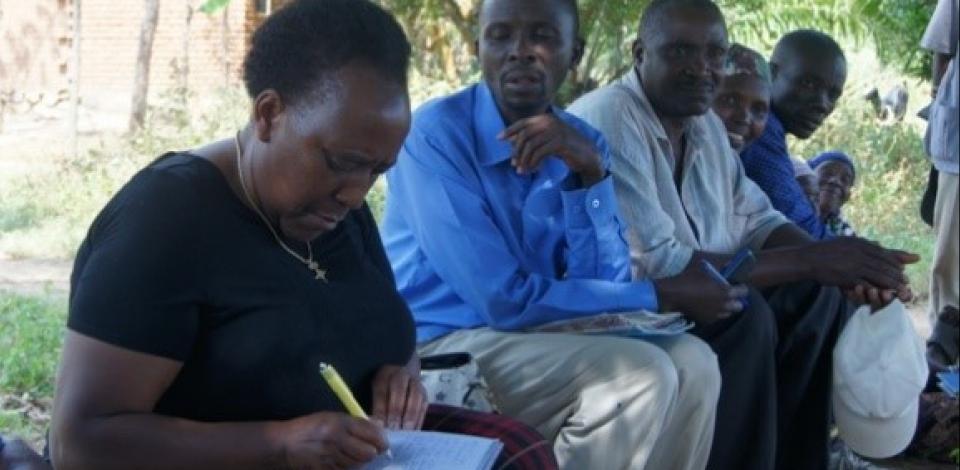
Introduction to Guide 4
This Guide describes when and how to assess stigma and mental wellbeing using qualitative and quantitative methods and instruments, as well as mixed methods. It also explains how to use the instruments.
Learning objectives
After working through this Guide, participants should be able to explain:
- Why assessment of stigma and mental wellbeing is important.
- The difference between quantitative and qualitative methods and the advantages and disadvantages of each.
- How to select the best assessment method(s) to use for their purpose and context.
- Which instruments are appropriate for use in NTD-endemic countries and can be used across NTDs.
Exercise 1: Warming-up exercise
You can use this exercise as an introduction to this Guide. The objective is to have people start thinking about the (im)possibility of measuring stigma. See Guide 4 Annex 1: Training exercises and tips for further details.
Why is assessment of stigma and mental wellbeing important?

Exercise 2: What do we want to know?
In this exercise, participants think about the purpose of measuring stigma and mental wellbeing. The objective is to have participants think about the actual use of measurements before deciding how to measure. See Guide 4 Annex 1: Training exercises and tips for further details.
Assessing stigma and mental wellbeing is important so you can:
- Show problems with stigma or mental wellbeing more clearly in a visual way, for example in graphs or diagrams. Neither stigma nor mental wellbeing is directly visible and so they are difficult to grasp. You can help visualise them with approaches such as measuring stigma, the level of mental wellbeing or the severity of a condition such as depression or anxiety or mapping the causes and consequences of stigma.
- Help provide data for advocacy, funding and planning. It is often said that ‘What gets measured, gets done’, and ‘What isn’t counted, doesn’t count’.
- Analyse the stigma situation in your area, in the service or facility you work in or among patients or people you work with. Is there stigma? What kind of stigma? How widespread or severe is it? Which factors influence the stigma? What is the impact of stigma? What might help to reduce stigma?
- Assess the mental wellbeing of persons affected by NTDs, in particular those with NTD-related disabilities and/or those affected by NTD-related stigma.
- Monitor how levels of stigma and mental wellbeing change over time. Is there a difference in the situation now, compared to some time ago? Has stigma decreased or increased? What about mental wellbeing?
- Assess the effect of interventions to reduce stigma and/or improve mental wellbeing. Have the levels of stigma come down following the interventions? Has mental wellbeing improved? Who has most benefited from the interventions? Why was the intervention effective? How long did the effects last? Were there any unexpected negative side effects of the intervention?
Credits
The following people have been the main contributors to this Guide on stigma assessment: Wim H. van Brakel, Abebayehu Tora, Julian Eaton, Maya Semrau and Ruth M.H. Peters
Published by: The International Federation of Anti-Leprosy Associations (ILEP) and the Neglected Tropical Diseases NGO Network (NNN), London, 2019
Photo credits: NLR / Wim van Brakel, Alex Joucot for Damien Foundation, The Leprosy Mission International, Helloquence, FAIRMED / Simon Huber, NLR India, NLR / Anna van 't Noordende.

 Infolep
Infolep